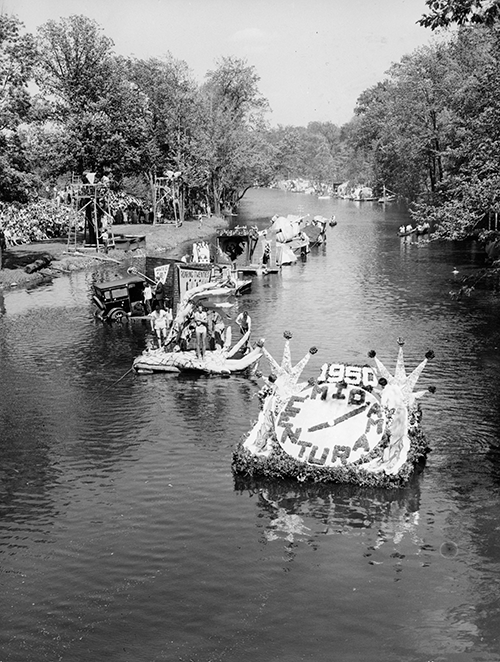MSU librarian gives depth to Red Cedar River in new online exhibit
EAST LANSING, Mich., July 2023 – The Red Cedar River and Michigan State University share a historical bond, with the iconic river playing a huge role in the founding and growth of the State Agricultural School known as MSU today. A new online exhibit by MSU Libraries Science Coordinator and Environmental Sciences Librarian Eric Tans provides an in-depth look at the unique relationship between the river and the university at https://bit.ly/Winding-Cedar.
The exhibit Close Beside the Winding Cedar: The Red Cedar River at Michigan State University calls attention to a significant piece of MSU’s history that has been largely excluded from both the early and historical accounts of the school and campus. The Red Cedar River’s history is as vast as the land through which it flows, and Tans uses archival images, historical documents, audio recordings and newspaper clippings to give a thorough overview of the cultural history of the Red Cedar River from its formation to the present day.
Close Beside the Winding Cedar opens by looking at the early history of the river, when it was primarily used as a waterway for travel and trade. The Red Cedar River flows through the lands of the Ottawa and Ojibway, and as such it was a shared space for the Anishinaabe to gather and helped facilitate travel across southern Michigan. This ended as European trappers and traders moved into the territory and began the process of dispossessing the Anishinaabe of their land. Included in the exhibit is a facsimile of Article 5 of the Treaty of Saginaw, which guaranteed the Ottawa, Ojibway and Potawatomi peoples hunting and fishing rights on the six million acres of land that their tribal chiefs ceded to the U.S. government in hopes of peacefully coexisting with white settlers after the prolonged War of 1812.
The exhibit continues in a chronological timeline to consider how the river influenced the setting of the State Agricultural College in 1855. The Michigan Agricultural College map provides an overview of the campus on its “opening day” of May 13, 1857. Bricks for the first buildings on campus were provided by the clay and sand in the river, and were housed in a brickyard located near today’s Adams Field. This section of the exhibit, titled “Built From the Banks,” also details the student labor that was required as part of their education at MAC, for which students received $0.08 per hour.
One of the largest exhibit standouts, however, is the emphasis on the Red Cedar River’s recovery from its industrial era beginning in the early years of campus. The riverfront was the site of MSU’s first boiler house and power plant, and the river itself was used as a dumping ground for substances ranging from human waste to industrial toxins. Tans uses historic photos to illustrate the timeline of the river’s journey from polluted waterfront to healthy ecosystem as he highlights the importance of recognizing the river as a site of recovery.
“MSU has a complex relationship with the Red Cedar River,” Tans said. “It is a beloved icon of the school and the focus of many campus traditions, but it’s also considered by many to be polluted and unhealthy. The history of MSU and the Red Cedar is a story of a river transformed from a healthy aquatic ecosystem into an industrial waterfront and back again, allowing the university to grow into what it is today.”
Other areas that the exhibit touches on include the Red Cedar River’s role in campus recreation, MSU athletics, World War II and artistic pursuits of Spartans.
The MSU Libraries are at the center of academic life at Michigan State University, providing expertise, collections and infrastructure for discovery and creation. The Libraries facilitate connections that support research, teaching and learning in our local and global communities. The Libraries also promote equal access to information and spaces for all and lead meaningful initiatives in accessibility, diversity, equity and inclusion.

